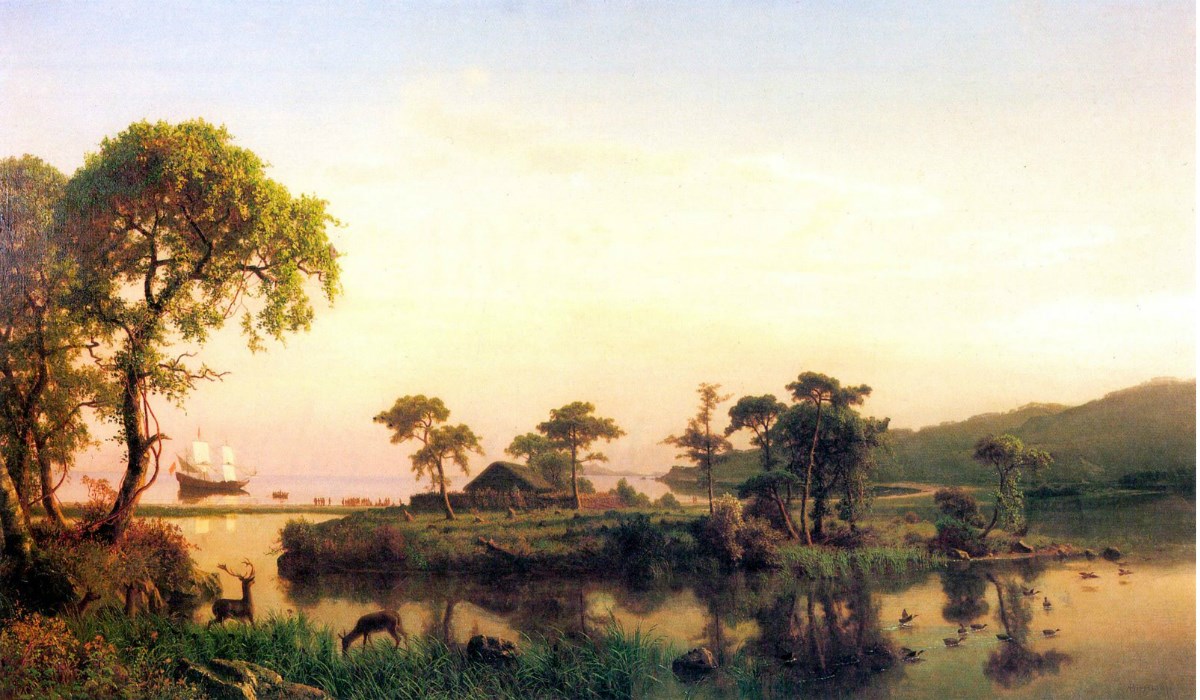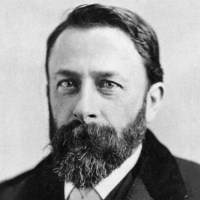
Landscape painter Albert Bierstadt was born in Germany in 1830. When he was two-years-old, his family emigrated from Germany and settled in New Bedford. Early on, Bierstadt had ambitions to become a painter, and became one of the first painters to capture the grandeur of the American west. 
In 1859, Bierstadt began making trips to the American west to paint its natural wonders. During his first trip, Bierstadt traveled from Saint Joseph, Missouri, to the Wind River Mountains. In 1860, he exhibited Base of the Rocky Mountains at the National Academy of Design. In 1863, he traveled to San Francisco and on to Yosemite. His work commanded top prices; The Rocky Mountains, Lander's Peak, completed in 1863, was purchased for $25,000 in 1865. In 1871, he returned to California, where he stayed for two years painting views of the Sierra Nevada, including Yosemite. Through the mid-1880s, he traveled in the west, as well as to Nassau and Europe. His last trip west was in 1889. In the years just after the Civil War, most of the U.S. population lived east of the Mississippi River. Few had seen the expanses of western lands. Bierstadt's large-scale, dramatic paintings inspired settlers and tourists to explore the vastness of their country. Bierstadt's andscapes also engendered a new reverence for the American landscape and injected ideas of preservation, conservation, and stewardship into the idea of Manifest Destiny. His landscapes later factored into the creation of the national parks and the National Park Service. Changing tastes in the 1880s brought a decline in the popularity of his art. Despite many attempts to sell his paintings to Congress, he narrowly avoided bankruptcy in 1895. He died in New York in 1902, and is buried at the Rural Cemetery in New Bedford. |
Last updated: August 16, 2018
